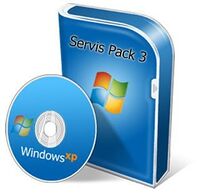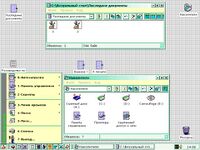Crusty Windows


Crusty Windows (also called bootleg Windows, modified Windows, or customized Windows) are illegally modified and (usually awful) variations of the Microsoft Windows operating system, typically developed by eccentric individuals who wish to see their favorite OS and franchises collide or just want to include every driver and program in existence in their OS installs. Many of these bootlegs are severely unstable, barely install at all, have nonsensical themes and wallpapers, are hysterically poorly made, or are just simply impossible to find because nobody in their right mind downloaded them. Some, however, do put actual effort, and actually look pretty nice.
Crusty Windows come in a variety of languages, most commonly in English, Arabic, and Russian. According to a local, in Russia, they are known as "говносборки". However, bootlegs come from a wide variety of countries and cultures, and so far, at least one has been created in every continent (except Antarctica) - from the good ol' USA, to the exotic lands of the Great Wall, to the first traditional wonder of the ancient world, or even the land where maple syrup is consumed atleast every day - there is always a Windows bootleg that represents someone out there.
While most bootlegs of Windows are free, some of them require payment - some, such as Windows 7 Natalite Edition, can go up to 50 USD.
History
Beginning years

The first bootleg variation of Windows was likely BedOS, which was released in 2000 (though bootlegs of MS-DOS are known to have existed before this.)
This OS had a Russian and English release, but required an existing Windows 95 or Windows 98 install, making it more akin to a transformation pack rather than a standalone OS. Still, this OS laid the foundations seen in modern bootlegs - adding a custom theme, custom icons, additional drivers and programs, as well as removing some programs. It was a very important OS for kicking off the Russian bootleg scene and thus the bootleg scene as a whole.
Several different versions of BedOS exist - 2.0 (pictured), 72214-1 (English version), and 3.0, which is themed after Mac OSX. The name of the OS is a bit of a joke, as when romanized, the name would be "BadOS". It is also one of the very few bootlegs that is distributed as shareware.

The second bootleg, and the first one distributed in an ISO format, was one based on XP before it was even released - Whistler Build 2531. This bootleg is based on a Release Candidate 2 build of XP and was likely a joke done out of spite to troll the beta scene of the time. This build would include many common things we see in bootlegs today, such as additional backgrounds, registry tweaks, cracked activation, and more.